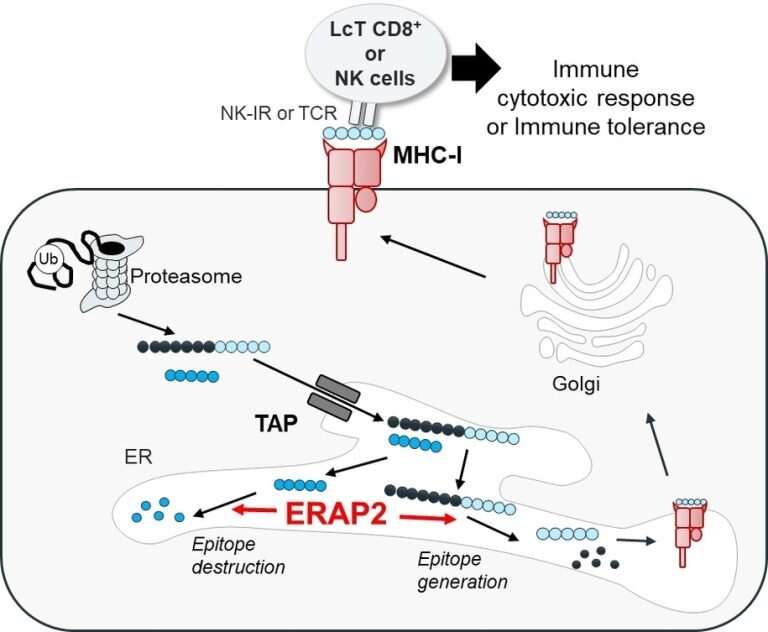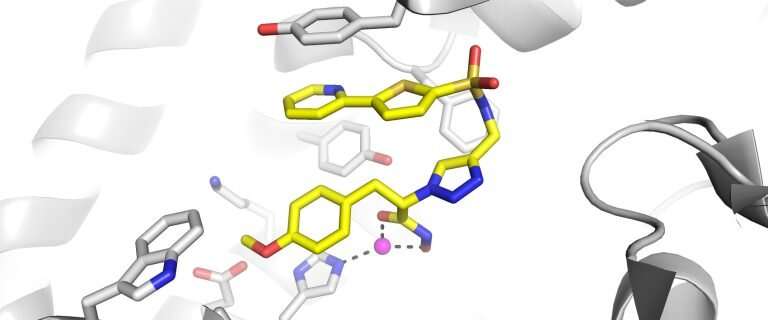New enzyme inhibitor shows promise for treating cancers, autoimmune diseases

Researchers at the University of Illinois Chicago have found a small molecule capable of manipulating an immune process that plays an important role in cancers and autoimmune diseases.
Their discovery is reported in an Angewandte Chemie paper titled "Discovery of the First Selective Nanomolar Inhibitors of ERAP2 by Kinetic Target-Guided Synthesis."
They discovered the molecule—and enzyme inhibitor—after first studying how the immune system works and why some diseases can be resistant to treatments.
"Tumors have the ability to present cell-surface markers in the form of non-self peptide antigens, or neoantigens, which renders them exquisitely sensitive to recognition and elimination by T-cells, a form of immune cells that kill tumor cells upon recognition of neoantigens," said study corresponding author Marlene Bouvier, UIC professor of microbiology and immunology at the College of Medicine.
"The visibility of a tumor to T-cells is therefore a critical aspect of whether a T-cell based immunotherapy treatment will be successful. Unfortunately, most tumors have low expression levels of neoantigens on their surfaces and, consequently, are resistant to immunotherapies."
For the study, the team looked at endoplasmic reticulum aminopeptidases 1 and 2, or ERAP1 and ERAP2, which are proteins responsible for trimming and over-trimming peptide antigens and neoantigens inside cells.

"Over-trimming of neoantigens in tumors by ERAPs represents missed opportunities to 'illuminate' tumors for recognition and destruction by T-cells," Bouvier said. "As such, the modulation of ERAP1 and ERAP2 function with small molecule inhibitors offers an exciting approach to tone down their over-trimming function, increase tumor visibility, and enhance immune responses against tumors."
In their study, the UIC team describes the discovery of the first highly potent and selective small molecule inhibitors of ERAP2.
"We used kinetic target-guided synthesis to discover such inhibitors," Bouvier said. "We then used X-ray crystallography to reveal at the atomic level the binding mode of the small molecules, which allowed us to improve their design for greater potency and selectivity. We also showed that some optimized analogues represent lead compounds for drug discovery efforts."
The researchers say that such small molecules of ERAP2 could be used in conjunction with other forms of cancer treatments, as well as for the treatment of other diseases that are dependent on the cell surface presentation of antigens, such as autoimmune and infectious diseases.
More information: Virgyl Camberlein et al, Discovery of the First Selective Nanomolar Inhibitors of ERAP2 by Kinetic Target‐Guided Synthesis, Angewandte Chemie International Edition (2022). DOI: 10.1002/anie.202203560
Journal information: Angewandte Chemie International Edition , Angewandte Chemie
Provided by University of Illinois at Chicago





















